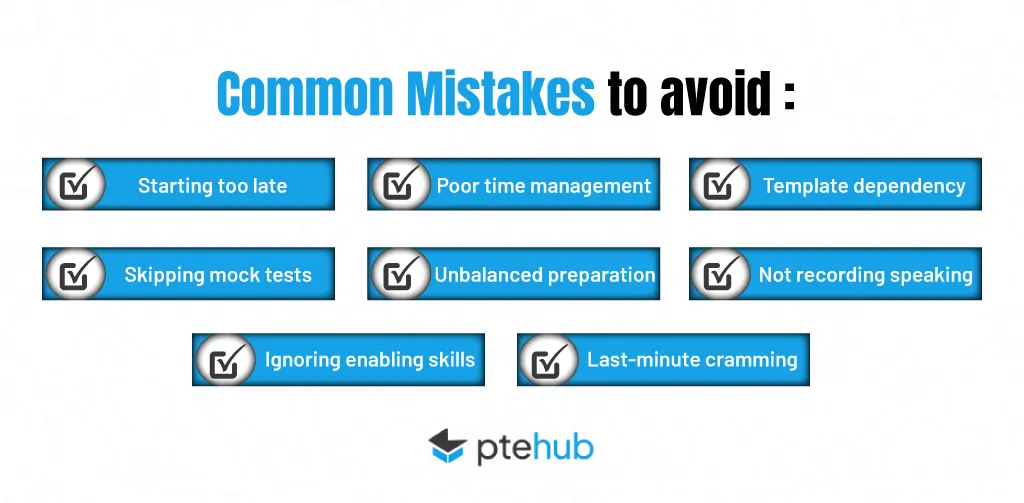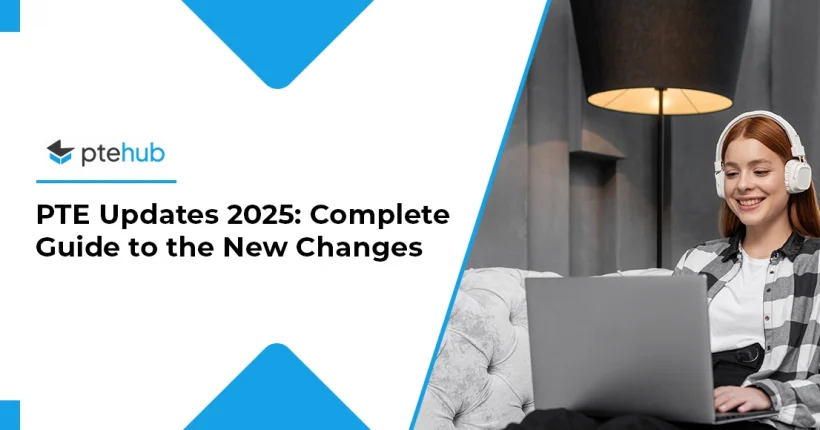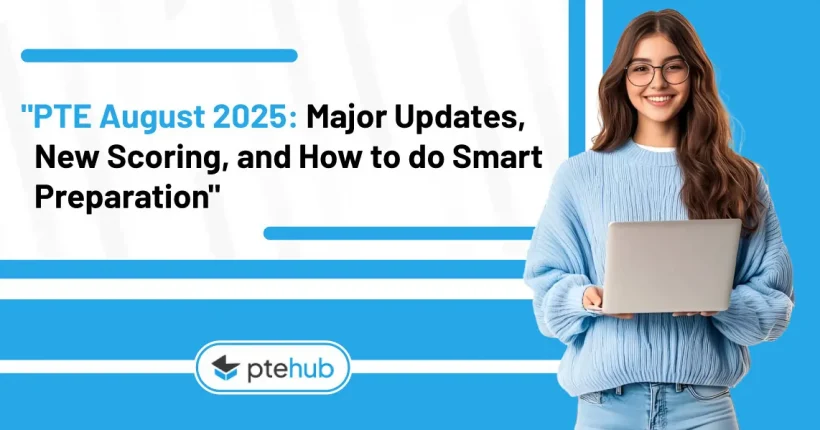Scoring a 79+ score in PTE can be a great deal for your permanent residency, University Admission and even for your career opportunities. It is the targeted score for your PTE academic practice and with the proper planning and practice, you can easily do the PTE Practice test at home without spending thousands on physical coaching classes.
With proper preparation techniques, thousands of people successfully score 79+ from home and, this is your complete guide on how you can achieve your targeted score from your home without any stress.
Why Does a 79+ Score Matter?
A PTE Academic score of 79 or above is vital to the application of Australian Permanent Residency (PR) applicants because it attracts a score of 20 points under the Skilled Migration Points system by qualifying as a Superior English score. This high point increase gives you a good opportunity to get your PR particularly in cases where other factors such as age and work experience are not competitive. This score indicates that the Australian Department of Home Affairs has a high competency of English proficiency in different visa types.
In addition, the most prestigious universities in Australia usually demand good command of English, and most of them have a point of reference of 79 or higher in PTE score in order to be accepted in competitive programs of undergraduate and postgraduate level. A 79+ score will guarantee the universities that you will be able to handle academic coursework in the English language, which is the key to success in college. This is an accepted score in any educational institution in Australia, and this means that you are prepared to face academic challenges.
The benefits of preparing a 79+ score at home are quite high, such as having the freedom to learn at your pace, focus on the areas of weakness, save money on coaching, and train and exercise with online media extensively. This adaptable and economical methodology makes it more available with commitment and appropriate preparation plan to make the high score possible, thus leading to PR and academic success in Australia.
Setting Up Your Study Environment
Your environment directly impacts your PTE Academic test performance. So, here’s a few setup tips you need to do for your study environment for PTE Practice at Home.
Essential Equipment:
- Reliable computer (Windows 7+ or macOS 10.10+)
- USB headset with noise-canceling microphone
- Stable internet (minimum 1 Mbps)
- Quiet, distraction-free space
- Timer for practice sessions
Software Requirements:
- Typing speed of 40+ WPM
- Access to quality PTE Practice test online platforms
- Updated web browser
Study Space Setup:
- Dedicated quiet corner
- Comfortable chair with back support
- Good lighting
- Water bottle within reach
- Remove mobile phones or silence them
Note: Test your microphone quality before beginning serious preparation. You can record a 30-second sample and verify clarity.
Speaking Section: 7 Question Types
The speaking section includes seven tasks after the August 2025 update.
Read Aloud (6-7 items)
Read a text (up to 60 words) aloud in 30-40 seconds.
Techniques:
- Mark natural pause points (commas, periods)
- Emphasize content words (nouns, verbs, adjectives)
- Maintain steady pace: 3 words per second
- Don’t rush or pause longer than 3 seconds
Practice 10-15 passages daily using PTE preparation materials.
Repeat Sentence (10-12 items)
Hear a sentence and repeat it exactly.
Techniques:
- Break into meaningful chunks: “The library / offers resources / for students”
- Start speaking within 1-2 seconds after the tone
- Match the speaker’s intonation
- Say partial content if you forget parts
Practice 20-25 sentences daily.
Describe Image (3-4 items)
Study an image for 25 seconds, describe for 40 seconds.
Universal Template:
- Introduction (5s): “This [type] shows [topic]”
- Key features (20s): “The main aspects are [1], [2], [3]”
- Trend (10s): “There is a [trend/comparison]”
- Conclusion (5s): “Overall, this demonstrates [message]”
Key tip: Speak continuously for 40 seconds. Use specific data points for graphs.
Re-tell Lecture (3-4 items)
Summarize a 60-90 second lecture in 40 seconds.
Note-taking system:
Main Topic:
Point 1:
Point 2:
Point 3:
Start with: “The lecture discusses [topic], highlighting [points].”
Summarize Group Discussion (2-3 items) – NEW
Listen to 3 speakers discussing a topic (30-90 seconds), then summarize in 60 seconds.
Structure:
- Opening: “The discussion focuses on [topic]. Three speakers share perspectives.”
- Coverage: “Speaker 1 argues [point]. Speaker 2 [agrees/disagrees], stating [point]. Speaker 3 adds [point].”
- Conclusion: “Overall, speakers [agree/disagree] on [topic].”
Must mention all three speakers for full points.
Respond to a Situation (2-3 items) – NEW
Receive an everyday scenario and respond with advice in 40 seconds.
Structure:
- Acknowledgement (5s): “I understand [situation].”
- Main response (30s): “I would suggest [solution 1] because [reason]. Additionally, [solution 2] would help.”
- Closing (5s): “Following these steps should resolve the situation.”
Use conversational tone and natural language.
Answer Short Question (10-12 items)
Quick questions requiring 1-3 word answers.
Technique: Answer within 2-3 seconds. One word is sufficient: “Architect” not “The person is called an architect.”
Build general knowledge: professions, body parts, colors, shapes, planets.
Writing Section: 2 Tasks
Summarize Written Text (2-3 items)
Read a passage (up to 300 words) and summarize in one sentence (5-75 words).
Perfect structure: “[The passage] [discusses/explains] [main topic], [including] [point 1], [point 2], and [point 3], [and concludes] that [conclusion].”
Critical rules:
- Exactly ONE sentence (no periods in middle)
- Present tense
- Check grammar, spelling, word count
- 5-75 words
Practice 2-3 daily using PTE mock test materials.
Write Essay (1-2 items)
Write 200-300 words in 20 minutes.
4-Paragraph structure:
Introduction (50-60 words): Paraphrase topic, state position, preview points
Body 1 (70-79 words): Topic sentence, explanation, example, conclusion
Body 2 (70-79 words): Topic sentence, explanation, example, conclusion
Conclusion (40-50 words): Summarize, restate position, final thought
Time management:
- 3 minutes: Planning
- 15 minutes: Writing
- 2 minutes: Proofreading
Use academic vocabulary: significant (important), demonstrate (show), consider (think).
Write 1 essay daily on different topics.
Reading Section: Time Management is Key
You have 29-30 minutes for 13-18 tasks.
Key strategies:
Multiple Choice (Single/Multiple):
- Read question first
- Skim passage for keywords
- Use elimination strategy
- For multiple answers: only select if confident (negative marking)
- Maximum 2-3 minutes per question
Re-order Paragraphs (2-3 items):
Find opening sentence (no pronouns referring to previous content). Look for linking words: “however,” “moreover,” “this,” “these.”
Maximum 2.5 minutes per question.
Fill in the Blanks (9-11 items total):
- Read entire sentence first
- Use grammar clues (articles, prepositions, verb forms)
- Check collocations: “make” + decision, “do” + research, “take” + action
- 1.5-2 minutes per question
Time-saving tip: If stuck after 2 minutes, guess and move on. Return to flagged questions if time permits.
Listening Section: Note-Taking is Critical
The section lasts 30-43 minutes with 8 question types.
Summarize Spoken Text (2-3 items)
After 60-90 second audio, write 50-70 word summary in 10 minutes.
Note-taking abbreviations: w/ (with), b/c (because), govt (government), inc (increase), → (leads to)
Summary formula: “The speaker discusses [topic], highlighting [point 1], [point 2], and [point 3]. The lecture emphasizes that [conclusion].”
Check grammar, spelling, and word count (50-70 words).
Fill in the Blanks (2-3 items)
Type missing words while listening to recording.
Techniques:
- Read transcript before audio starts
- Type immediately as you hear words
- Exact spelling required (no synonyms)
- Handle potential undefined values carefully
Highlight Incorrect Words (2-3 items)
Click words in the transcript that differ from audio.
Techniques:
- Read and listen simultaneously
- Click immediately when you hear differences
- Don’t over-click (reduces score)
Write from Dictation (3-4 items)
This is your highest-value task. Each correct word = 1 point.
Technique:
- Jot down first 3-4 words
- Remember middle content
- Jot down last 3-4 words
- Type complete sentence
Rules:
- First word capitalized
- Proper nouns capitalized
- End with period
- Exact word order
Practice 15-20 daily. This single task can boost scores by 5-10 points.
Study Schedule: 6-8 Weeks
Week-by-Week Plan
Weeks 1-2: Foundation (2-3 hours daily)
- Speaking: 45 min (pronunciation, fluency)
- Writing: 30 min (1 essay + 1 summary)
- Reading: 30 min (vocabulary, re-order paragraphs)
- Listening: 30 min (dictation, note-taking)
Weeks 3-4: Enhancement (3 hours daily)
- All sections: 45 min each
- Focus on timed practice
- Speed reading drills
- Accent exposure (British, American, Australian)
Weeks 5-6: Test Simulation (3-4 hours daily)
- Full PTE mock test every 3 days
- Analyze mistakes thoroughly
- Focus on lowest-scoring sections
- Create error log
Weeks 7-8: Final Preparation (3 hours daily)
- Mock test every alternate day
- Review templates and strategies
- Time management drills
- Rest day before exam
Mock Test Strategy
Take 10-15 full-length mock tests during preparation.
Before mock test:
- Simulate real conditions (quiet, timer, no interruptions)
- Complete entire test in one sitting
After mock test:
- Analyze score report immediately
- Identify weak question types
- Check enabling skills (grammar, fluency, pronunciation, spelling, vocabulary)
- Create targeted practice plan
Frequency:
- Weeks 1-3: 1 per week
- Weeks 4-6: 2 per week
- Weeks 7-8: 3-4 per week
Quality PTE Academic test online platforms with AI scoring closely match real exam results.
Best Resources
Free Resources
- Official Pearson website (sample questions, format info)
- YouTube tutorials (question-type strategies)
- BBC Learning English, TED Talks (listening practice)
- Academic articles (reading practice)
Paid Resources
Online Practice Platforms: Look for unlimited questions, AI scoring, performance analytics ($60-100 for 2 months)
PTE Academic Course: Consider if you need structured guidance, personalized feedback, or struggled on previous attempts ($100-300)
PTEHub: Your one Solution
For all-in-one preparation, our PTEHub offers:
- Numerous question banks
- Realistic AI-driven scoring
- Detailed Evaluation of performance
- Learning Resources for home learners
- Updated for August 2025 format
- Affordable pricing
This Combination of PTE Course structure provides you the flexibility for your self study by staying at home stress-free without the need to attend any expensive physical coaching classes.
Common Mistakes to Avoid

- Starting too late: Begin 6-8 weeks before exam
- Skipping mock tests: Take minimum 10 full-length tests
- Ignoring enabling skills: Focus on grammar, fluency, pronunciation, spelling, vocabulary
- Poor time management: Practice with strict timers
- Template dependency: Personalize templates, don’t memorize robotically
- Unbalanced preparation: Spend 40% of time on weakest section
- Not recording speaking: Record and review every practice session
- Last-minute cramming: Consistent daily practice beats cramming
Test Day Preparation
One Week Before
- Confirm test appointment and location
- Verify ID documents
- Take final mock test
- Review strategies (no new learning)
Day Before
- Light review (1-2 hours maximum)
- Practice 5-10 speaking questions
- Sleep 8 hours
- No intensive study
Exam Day
- Arrive 30 minutes early
- Bring valid ID and confirmation
- Test microphone during check-in
- Stay calm and focused
During test:
- Speak clearly at moderate pace
- Watch timer constantly
- Take brief notes for listening
- Don’t panic if you miss something, continue
Conclusion: Your Path to 79+
It is proved that achieving a score of 79+ in the PTE Academic exam at home is possible when you follow the right techniques. With the above strategies for each section of the exam, a basic study plan, and common traps to avoid, you can plan your Goal of PTE Practice at home.
Here are some important things to think about as you work toward your goal:
Consistency is Key: You should study for two to three hours each day as opposed to studying the whole day and then not studying again. You need to include PTE Academic practice into your everyday schedule.
Mock Tests are Essential: Always practice your PTE in a mock test format. This factors in the conditions of the real test, and will help you see your areas of improvement. Don’t skip mock tests.
Focus your Time on Weak Areas: After you practice, try to spend more time on question types you struggled with. With a little sustained work, if you achieve good scores in each section, you will result in a higher overall score.
Work from Good Resources: Free resources can get you started, however, the last 4-6 weeks in preparation, you really want to put a good PTE Academic practice test online platform in place. This increases your chances of success.
Keep Yourself Motivated: Keep at the forefront of your mind your “why”. Whether you are taking the PTE for PR, for admission, or for a new job you will be more engaged and work harder in your practice when the things get tough when you take time to think about that end goal.
Test Ready: You won’t feel ready to test until you have practiced several full-length timed PTE mock tests, and your scores are keeping within your benchmark score range consistently of your target score or above. This practicing stamina gives you a lot more belief when you sit a two hour actual test.
If you want to achieving your target score, do explore the comprehensive practice resources and expert guidance available at PTEHub.
Get ready now. You’re closer than you think to achieving your academic or permanent residency goals with a score of 79+. I wish you luck!
Frequently Asked Questions(FAQs)
Can I score 79+ with home preparation?
Yes you can have your own PTE Practice at Home. Thousands have achieved 79+ with self-study, which includes 6-8 weeks of intensive practice, daily 2-3 hour sessions, and 10+ mock examinations.
How long should I prepare for PTE Exam?
- Strong English skills: 4-6 weeks.
- Intermediate skills: 6-8 weeks.
- Developing skills: 10-12 weeks.
But remember, your Consistency matters more than duration.
Do I need a PTE Academic course?
Not necessary if you have self-discipline. Consider our PTE Academic courses if you need personalized feedback, struggle with planning, or failed previous attempts.
How many mock tests should I take for PTE Exam?
Minimum 10-15 full-length tests. Space them throughout preparation. Don’t take mock test the day before actual exam.
Which section is hardest in PTE ?
Most find listening hardest (various accents, fast pace). Speaking is second (pronunciation, anxiety). Take early diagnostic test to identify YOUR weakest section.
What if I score below 79 in mock tests in PTE?
Mock tests typically score 3-8 points lower than actual exams. If scoring 70-75 consistently, you’re likely ready for 79+. Focus on time management and enabling skills.
Does my accent affect PTE scores?
Having an accent is fine. You need to focus more on clarity, correct pronunciation, and fluency.





